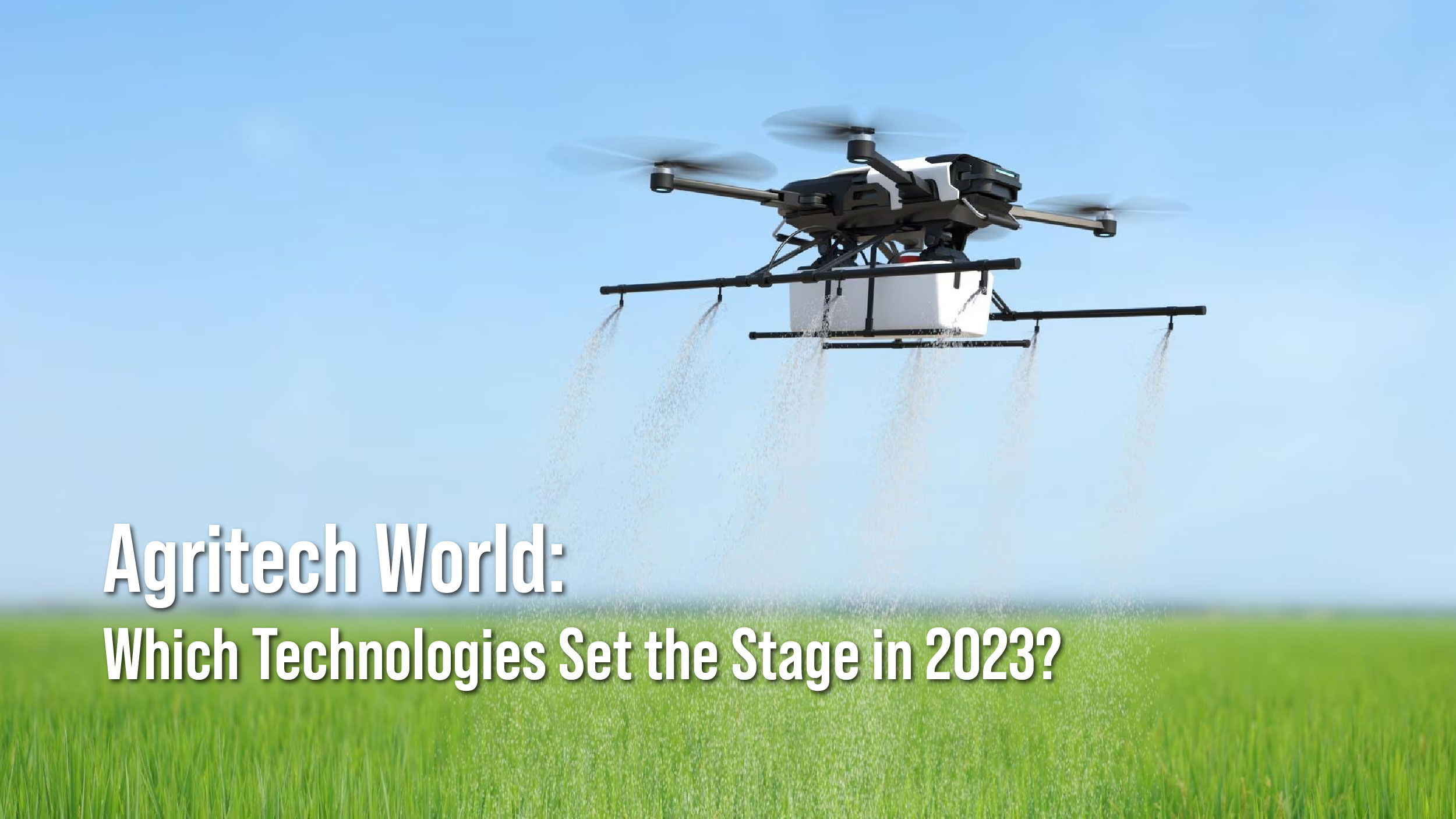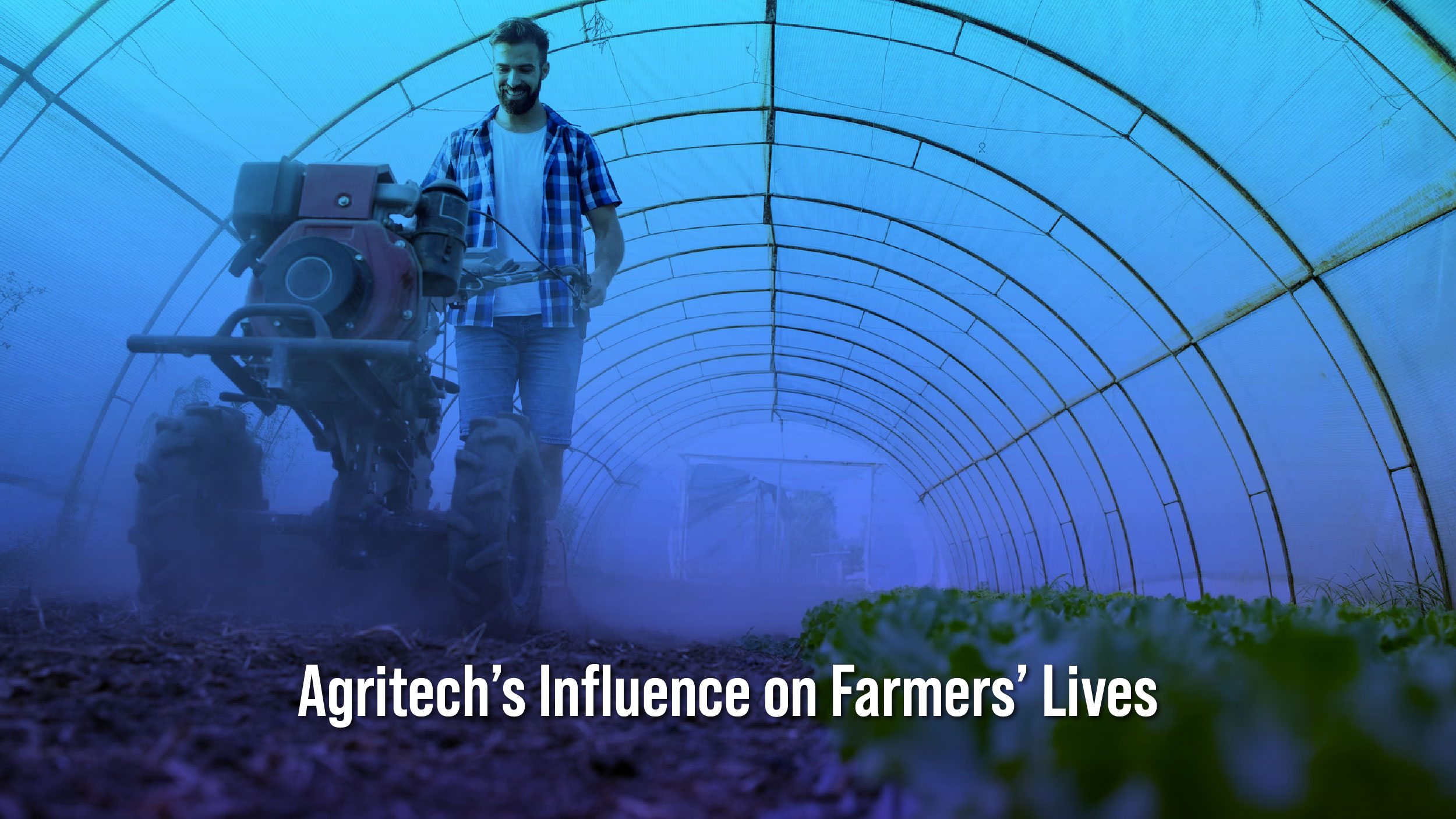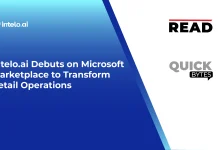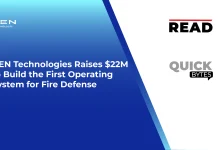If you’re wondering what the buzz is all about, you’re in for a treat. Agritech, short for agricultural technology, is like a superhero for farming. It’s where cutting-edge tech meets the good old soil, and the results are nothing short of amazing.
Picture drones zipping through the air, robots tending to crops, and data crunching to make farming smarter and more efficient. It’s like farming of the future, and it’s happening right now.
With that said, let’s zoom in and check out the coolest tech that’s making waves in the agritech scene this year, 2023!
What is Agritech?
Agricultural technology, often referred to as agritech, combines agriculture with technological advancements to enhance agricultural productivity. In this field, technology is employed to design and automate machinery, optimizing every stage of planting and animal husbandry. This approach aims to maximize yields and profitability while minimizing resource usage.
Agritech World: Which Technologies Set the Stage in 2023?

Today’s ag-tech innovations are meeting the demand for automated farming, digital progress, and eco-friendly practices. The rise of smart farming, using IoT, computer vision, and AI, is making agriculture more efficient while reducing crop losses.
Robots and drones are taking over tasks like harvesting, weeding, and crop spraying. Plus, using drones, satellites, and GPS tech provides detailed, location-specific field insights. Here are the cutting-edge technologies steering the agritech sector into 2023.
1. Digital Farming
Farmers could very well meet customer demand for transparency today by utilizing digital tools to provide buyers with specific information about how and where their food is grown. This traceability is especially useful for crops that must adhere to strict organic or non-GMO quality standards.
Furthermore, computerized tools can help determine how, where, and what to plant to maximize harvests. Certain crop shortages can be avoided through supply management. Europe’s Copernicus program, for example, uses satellite data on a weekly basis to track changes in land use and crop development.
2. Connectivity Technologies
In rural areas around the world, a lack of connectivity via an established network or broadband is a concern. Without connectivity technologies such as 5G, LPWAN, rural broadband, or satellite-enabled connectivity, smart farming is impossible. The 5G technology now enables various IoT devices, robots, and sensors to communicate data at ultrafast speeds.
With agritech, farmers can now monitor data more accurately in real time and take the necessary actions. High-speed internet via fiber optic cables allows for the real-time exchange of field data, which is critical for improving accuracy.
3. Agricultural Biotechnology
Pests and plant diseases end up wasting a substantial chunk of crop yield every year. Although agrochemicals are used in agriculture, they are not the best solution for long-term sustainability. On the other hand, the use of biotechnology in agriculture improves crop and livestock quality. Plant breeding, hybridization, genetic engineering, and tissue culture are scientific techniques that help identify better traits in plants more quickly. CRISPR-Cas9 is a genome editing technology that allows for high target specificity while also increasing speed and precision. It creates transgenic plants with desirable characteristics such as disease resistance, drought tolerance, pest resistance, and high yield capacity. This improves farm production profitability.
Agritech Tomorrow reports that to sustain our current living standards, farmers will need to boost crop production by a minimum of 23% due to the rising population and food demand.
4. Agro-machinery Automation
Autonomous and semi-autonomous agricultural machinery will improve harvesting accuracy while decreasing crop losses. As a result of autonomous technologies, agronomists will be able to focus on more analytical activities, relieving a significant amount of pressure on human labor. Furthermore, unmanned technologies will reduce the burden on the human workforce and allow agronomists to focus on more analytical tasks.
Cognitive Pilot is a startup that has developed hardware and software to improve corn harvesters. It enables the driver to make real-time adjustments to the harvester’s path along the crop border, synchronize it with the harvester truck, seek assistance at headlands, and identify obstacles in the field such as power poles, wild animals, or people.
5. IoT Devices
The volume of data collected in the fields and from agricultural equipment is simply too large to handle manually. Sensor manufacturers are focusing their efforts on developing hardware and software ecosystems that will provide customers with an all-IoT experience, including data analysis using AI and machine learning.
An IoT device has one or more sensors that collect data and provide accurate information in real time via mobile applications or other means. These sensors are used for a variety of tasks, including soil, temperature, and humidity sensing, plant and livestock tracking, and more. It also allows for remote monitoring of farms, which makes farming more convenient for farmers. Furthermore, new irrigation systems make use of IoT sensors to automate the delivery of water to crops. These include evapotranspiration sensors, on-site soil moisture sensors, and rain sensors.
Companies like Acres are pioneering technology to monitor and gather data on large farmland areas, evaluating their worth and productivity. Microsoft’s forthcoming toolkit serves as another prime instance of technology’s prowess in the realm of IoT.
Also Read: Everything You Need to Know about Microelectronics: From Chips to Wonders
Agritech’s Influence on Farmers’ Lives

Agri-tech enables farmers to easily access inputs and sell directly to food processors, bypassing middlemen for increased profits. For instance, CropIn, a SaaS agri-tech startup, recently secured $14 million in series D funding. This technology plays a crucial role in boosting economic growth in developing countries, uplifting farmers’ livelihoods, reducing poverty, and creating jobs.
In 2018, agriculture contributed to over 25% of the GDP in developing nations. This led to increased employment opportunities for both farmers and consumers. Agri-tech further benefits farmers by enhancing data access and communication, utilizing AI, ML, and data analytics for better crop yields, facilitating direct connections to consumers, and improving farmers’ creditworthiness for financial aid.
The World Economic Forum reports that agriculture, valued at $2.5 trillion globally, is among the largest and most vital industries worldwide. Agritech is set to revolutionize agriculture, exemplified by the use of IoT in smart farming.
Final Thoughts
Clearly, the mashup of agriculture and tech is like a shining beacon for the future of farming! With innovations like precision agriculture, IoT-enabled smart farming, and advanced data analytics, the agritech sector is poised to drive sustainable, efficient, and resilient agricultural practices. The ongoing commitment to harnessing technology’s potential in agriculture not only ensures food security for a burgeoning global population but also paves the way for a more environmentally conscious and economically viable agricultural industry. Embracing agritech is not merely an option; it is a necessity for the continued prosperity of our agricultural endeavors and the well-being of our planet.




